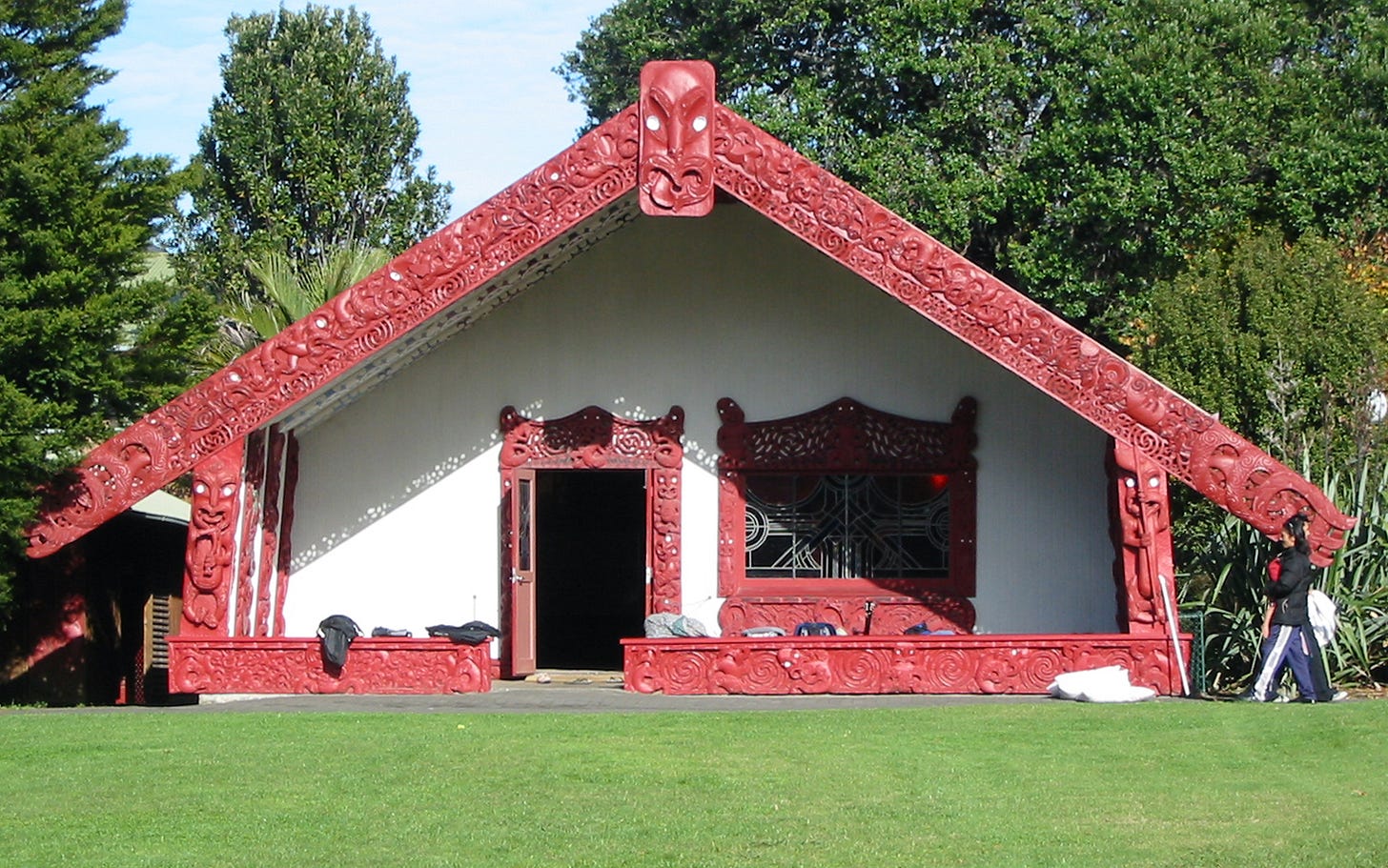Week 36: The Māori History of Aotearoa (New Zealand)

Where in the world?
Aotearoa (“The Land of the Long White Cloud,” Māori name for New Zealand)
Just like the U.S., Canada, Australia and South Africa (among others), New Zealand is a settler nation, where European settlers displaced the local population. In other words, settler nations are “sovereign states which were colonized by migrant settlers whose descendants remain politically dominant over the indigenous peoples.”
Who in the world?
Between 1280 and 1350, Polynesians began to settle in the islands and then developed a distinctive Māori culture. In 1642, the Dutch explorer Abel Tasman became the first European to sight and record New Zealand. In 1840, representatives of the United Kingdom and Māori chiefs signed the Treaty of Waitangi, which declared British sovereignty over the islands. In 1841, New Zealand became a colony within the British Empire. In 1907 it became a dominion, gained full statutory independence in 1947, and the British monarch remained the head of state.
Today, the majority of New Zealand's population of 5 million is of European descent; the indigenous Māori are the largest minority, followed by Asians and Pacific Islanders.
What in the world?
Waitangi Day (Māori: Te Rā o Waitangi), the national day of New Zealand, marks the anniversary of the initial signing – on 6 February 1840 – of the Treaty of Waitangi, which is regarded as the founding document of the nation.
The British authorities had drafted the Treaty with the intention of establishing a British Governor of New Zealand, recognizing Māori ownership of their lands, forests and other possessions, and giving Māori the rights of British subjects. However, the Māori and English texts of the Treaty differ in meaning significantly; particularly in relation to the meaning of having and ceding sovereignty. These discrepancies, and the subsequent colonization by Pākehā (non-Māori/European) settlers led to disagreements in the decades following the signing, including full-out warfare.
When in the world?
The Māori protest movement emerged in the early 1970s as part of a broader Māori renaissance. It has focused on issues such as the redressing Treaty of Waitangi grievances, Māori land-rights, the Māori language, culture, and racism in New Zealand. Most members of the movement have been Māori but it has attracted some support from pākehā New Zealanders and internationally, particularly from other indigenous peoples.
Notable successes of the movement include establishment of the Waitangi Tribunal in 1975, the return of some Māori land, and the Māori language becoming an official language of New Zealand in 1987.
The Māori language (te reo Māori) and culture were discouraged by the education system and New Zealand society in general, and schoolchildren were actively discouraged from speaking Māori in school. The 1867 Native Schools Act decreed that English should be the only language used in the education of Māori children - this policy was later rigorously enforced. Urbanization produced a generation of Māori who mostly grew up in non-Māori environments and were therefore less exposed to the language. In addition, many parents felt that it was much more important for their children to be fluent in English and made no attempts to pass on the language.
As a result, many leaders of Māori protest were not fluent in Māori and felt that this was a major cultural loss. They initiated a number of schemes for the promotion of the language, such as te Wiki o te Reo Māori (Māori Language Week); a program which trained fluent speakers as teachers; and kohanga reo: Māori language pre-schools and later Māori kura or separate immersion schools at primary and secondary level. Later there were campaigns for a Māori share of the airwaves. These eventually resulted in the iwi radio stations and a Māori Television channel, all of which actively promoted the language.
In 1987, Te Reo was made an official language of New Zealand, with the passing of the Māori Language Act. Activists also campaigned to change the names of landmarks such as mountains (maunga in Māori) back to their original Māori names, and to end the mispronunciation of Māori words, especially by newsreaders and other broadcasters. Many Māori cultural forms, such as carving, weaving and performing arts such as haka had declined in the nineteenth century and have been experiencing a renaissance.
Why in the world?
Despite the recent Māori renaissance, the Indigenous population in New Zealand still experiences higher rates of incarceration and poverty and worse health outcomes compared to their Pākehā counterparts.
Further Reading:
Medium: Shifting Indigenous Identities Through the Lens of Witi Ihimaera
“Why I write” by Witi Ihimaera - AN EXCERPT BELOW
My first priority is to the young Maori, the ones who have suffered most with the erosion of the Maori map, the ones who are Maori by color but who have no emotional identity as Maori. My second priority is the Pakeha (Non- Maori New Zealander) — he must understand his Maori heritage, must understand that cultural difference is not a bad thing and that, in spite of the difference, he can incorporate the Maori vision of life into his own personality. Thirdly, I write for all New Zealanders to make them aware of the tremendous value of Maori culture and the tragedy for them should they continue to disregard this part of their dual heritage. - Witi Ihimaera



